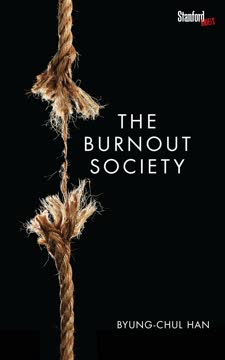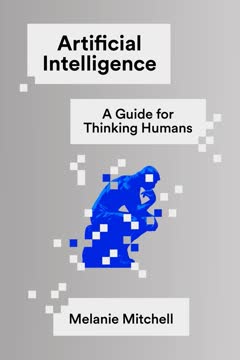Key Takeaways
1. Critical thinking is essential for evaluating arguments and making informed decisions
If you develop your ability to analyse people's attempts to persuade so that you can accurately interpret what they are saying or writing and evaluate whether or not they are giving a good argument – whether, for example, they are providing you with a good reason to believe that you should buy Fairtrade goods – then you can begin to liberate yourself from accepting what others try to persuade you of without knowing whether you actually have a good reason to be persuaded.
Empowerment through analysis. Critical thinking skills enable individuals to navigate the constant barrage of persuasive messages in daily life. By developing the ability to dissect and evaluate arguments, people can make more informed decisions about what to believe and how to act. This intellectual independence is crucial in an age of information overload and sophisticated persuasion techniques.
Practical applications. Critical thinking extends beyond academic settings to real-world scenarios:
- Evaluating political claims and policy proposals
- Assessing marketing and advertising messages
- Making informed consumer choices
- Analyzing news and media reports
- Resolving personal and professional conflicts
Societal benefits. A population skilled in critical thinking contributes to a more informed and engaged citizenry, better decision-making in public policy, and reduced susceptibility to misinformation and manipulation.
2. Arguments consist of premises supporting a conclusion, distinct from explanations
An argument needs more than one claim: it needs the claim of which the arguer hopes to convince his or her audience, plus at least one claim offered in support of that claim.
Structure of arguments. Arguments are composed of two essential elements:
- Premises: The supporting statements or evidence
- Conclusion: The claim being argued for or defended
This structure distinguishes arguments from mere statements or explanations. Understanding this framework is crucial for identifying and analyzing arguments effectively.
Distinguishing arguments from explanations. While arguments aim to persuade, explanations seek to clarify or provide reasons for an accepted fact. Key differences:
- Arguments: Support a debatable conclusion
- Explanations: Elucidate an already accepted fact
Recognizing this distinction helps in appropriately evaluating the content and intent of different types of communication.
3. Deductive validity and inductive force determine argument strength
To say that an argument is valid is to say: If the premises are (or were) true, the conclusion would also have to be true.
Deductive validity. In a deductively valid argument, the truth of the premises guarantees the truth of the conclusion. This logical relationship provides the strongest form of argumentation, leaving no room for the conclusion to be false if the premises are true.
Inductive force. Inductive arguments, while not guaranteeing their conclusions, provide varying degrees of support:
- Strong inductive arguments make their conclusions highly probable
- Weak inductive arguments offer less support for their conclusions
Evaluating argument strength involves:
- Identifying the type of argument (deductive or inductive)
- Assessing the logical relationship between premises and conclusion
- Considering the truth and relevance of the premises
4. Logical fallacies undermine arguments and should be identified
Fallacies are arguments in the sense that fits our definition of a set of propositions, some of which are premises, one of which is a conclusion, the latter intended to follow from the former. But in one way or another, they are bad arguments.
Common fallacies. Recognizing logical fallacies is crucial for critical thinking:
- Ad hominem: Attacking the person rather than the argument
- Appeal to authority: Relying on an unqualified source
- False dilemma: Presenting only two options when more exist
- Slippery slope: Assuming one action will inevitably lead to extreme consequences
- Post hoc ergo propter hoc: Assuming causation from correlation
Impact of fallacies. Fallacious reasoning can:
- Lead to flawed conclusions
- Manipulate emotions rather than reason
- Distract from the real issues at hand
Developing the ability to spot and name fallacies enhances one's capacity to evaluate arguments critically and engage in more productive discussions.
5. Language and rhetoric can obscure or manipulate arguments
Rhetoric: Any verbal or written attempt to persuade someone to believe, desire or do something that does not attempt to give good reasons for the belief, desire or action, but attempts to motivate that belief, desire or action solely through the power of the words used.
Rhetorical techniques. Various language devices can influence without providing logical reasons:
- Emotional appeals (pathos)
- Appeals to character or credibility (ethos)
- Loaded language and connotations
- Metaphors and analogies
- Repetition and emphasis
Critical analysis. To evaluate arguments effectively:
- Identify rhetorical techniques being used
- Separate emotional appeals from logical reasoning
- Look for hidden assumptions or implications
- Consider the context and audience of the argument
Awareness of these techniques helps in distinguishing between persuasive rhetoric and sound argumentation, leading to more informed decision-making.
6. Reconstructing arguments in standard form clarifies their structure
The purpose of setting out arguments in this manner is to maximise clarity. Using this method helps us to see the stages of reasoning clearly and to make comparisons between arguments of similar form.
Standard form benefits. Reconstructing arguments provides several advantages:
- Clearly identifies premises and conclusions
- Reveals hidden assumptions
- Facilitates easier evaluation of logical structure
- Enables comparison between different arguments
Reconstruction process:
- Identify the main conclusion
- Identify explicit premises
- Identify and add implicit premises
- Arrange premises and conclusion logically
- Number premises and use inference bars
This systematic approach helps in understanding and evaluating complex arguments more effectively.
7. Evaluating premises and considering context is crucial for sound reasoning
The principle of charity enjoins us to reconstruct the argument in the most favourable way, and we need those concepts in order to determine exactly what that means.
Principle of charity. When reconstructing arguments:
- Interpret ambiguous language favorably
- Assume the strongest possible version of the argument
- Consider the context and background knowledge
Evaluating premises. Assess each premise for:
- Truth: Is the statement factually correct?
- Relevance: Does it support the conclusion?
- Sufficiency: Do the premises provide enough support?
Considering both the principle of charity and rigorous premise evaluation leads to fairer, more comprehensive analysis of arguments.
8. Probability and statistics require careful interpretation in arguments
Probability of the kind that we are speaking of is not an alternative to truth or falsity in the way that finishing in the middle of the league table (or standings) is an alternative to finishing at the top or at the bottom. Nor is probability a kind of truth.
Understanding probability. Key concepts:
- Probability is a measure of likelihood, not certainty
- Distinguishing between relative and absolute probability
- Considering base rates and sample sizes
Statistical interpretation. Common pitfalls to avoid:
- Confusing correlation with causation
- Overlooking margins of error
- Misunderstanding statistical significance
Developing statistical literacy enhances the ability to evaluate probabilistic arguments and make informed decisions based on data.
9. Practical reasoning involves weighing costs, benefits, and probabilities
Practical reason, as we've just seen, involves a weighing of one value – the value of the desired result – against another – the negative value of the cost of the envisaged means of bringing about the desired result.
Decision-making framework. Practical reasoning involves:
- Identifying desired outcomes
- Evaluating potential actions
- Assessing costs and benefits
- Considering probabilities of success
- Weighing ethical implications
Expected value. Calculating expected value helps in decision-making:
- Expected Value = (Probability of Outcome) × (Value of Outcome)
- Compare expected values of different options
This approach provides a structured method for making complex decisions, balancing multiple factors and potential outcomes.
10. Engaging critically with arguments improves decision-making and intellectual growth
The skills of evaluation and interpretation involved in argument analysis are what we use (or ought to use) in determining the strength of the prosecution's case in such situations. In fact in any situation in which we have to make decisions, be they about our lives or the lives of others, there is no substitute for the ability to think logically and to detect errors in the thinking of others.
Benefits of critical engagement:
- Enhanced decision-making in personal and professional life
- Improved ability to detect flaws in reasoning
- Greater resistance to manipulation and misinformation
- Development of more nuanced and informed viewpoints
Practical application. Apply critical thinking skills to:
- Personal beliefs and assumptions
- Media consumption and news analysis
- Professional and academic discourse
- Ethical dilemmas and moral reasoning
Continuous practice in critically engaging with arguments leads to intellectual growth, better judgment, and more effective communication skills.
Last updated:
Review Summary
Critical Thinking is viewed as a practical and valuable introduction to logic and critical thinking. Readers appreciate its clear explanations, examples, and exercises for each chapter. The book covers topics like argument analysis, deductive and inductive reasoning, logical fallacies, and rhetorical ploys. While some find it dense or boring, many praise its effectiveness in improving analytical skills and changing how they approach information. Several reviewers note its relevance in today's world and recommend it for students and those interested in enhancing their reasoning abilities.
Similar Books
Download PDF
Download EPUB
.epub digital book format is ideal for reading ebooks on phones, tablets, and e-readers.














